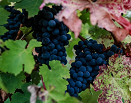| home | 6 generations of wine merchants |
expertise | technical sheets & sales support |
contact us | bordeaux wine region |
AWC blog |






Bordeaux is one of the oldest and largest wine growing regions in the world, producing more than 800 million bottles of wine annually from more than 12,000 châteaux. Over its 2000 year history of wine production, Bordeaux has divided itself into three general growing regions; codified a system of appellations that indicate the specific area from which a wine hails; established through trial and error the grapes varietals that make the best wine given the terroir and growing conditions; and in the last 150 years, created classifications that rank the wines by quality, and unintentionally, by price. As one of the most beautiful and impressive wine regions in the world, Aquitaine Wine Company encourages both professionals and amateurs in the industry to visit Bordeaux.
Grape Varieties
| Each appellation has a selection of grape varieties that it can legally use in its wines. Most winemakers, however, narrow the selection even further by using only the varieties that reliably produce ripe fruit each year and suit the style of wine they want to produce. | |
Cabernet Sauvignon
|
Blackcurrant, mint, chocolate, tobacco, cedar.
Full-bodied, structured, tannic |
| Cabernet Sauvignon is famous for its ability to age. It has a high phenolic concentration, giving it deep color and structured tannins. | |
| This grape variety loves the well-drained gravel soils of the Medoc and Graves. | |
Merlot
|
Blackcurrant, blackberry, coffee, plum, pepper.
Round, velvety palate. |
| This is Bordeaux’s most planted grape variety. | |
| Merlot is famous for its plump, lush fruitiness. It produces a wine that is less austere, less tannic and less acidic than Cabernet Sauvignon. | |
| Merlot loves damp, cool soils like those found in Saint Emilion and in the clay soils of Pomerol. It responds better than Cabernet Sauvignon to these conditions, which is why it dominates the Right Bank. | |
Cabernet Franc
|
Raspberry, pencil shaving, tobacco, grass.
Light to medium bodied wines. |
| In the Libournais area, this is often referred to by the local name “Bouchet”. | |
| It is lighter in color and tannins than Cabernet Sauvignon, and particularly well-suited to cool, inland climates. It buds and ripens earlier than Cabernet Sauvignon, making it easier to ripen fully and much less susceptible to poor weather conditions. | |
Petit Verdot
|
Spicy, pencil shaving, violet, leather.
Concentrated, tannic |
| Petit Verdot ripens late, even later than Cabernet Sauvignon, thus making it difficult to count on in terms of reaching maturity. In fact, it only ripens fully in the best vintages, so is used only ever few years. | |
| It is found mainly in the Medoc. There has been a revival of Petit Verdot in recent years, particularly in the Margaux appellation. | |
Malbec
|
Rich color
Solid tannins, aging potential |
| Around Libourne, it is known as Cot or Pressac. In Cahors, it is known as Auxerrois. In fact, there are nearly 400 synonyms for this grape variety, because it has been planted in so many different regions. | |
| In the Bordeaux region, it is mostly found around Blaye, Bourg, and Entre-Deux-Mers, and sometimes in the Medoc and St. Emilion. | |
Carmenère
|
Intense, deep color.
Full-bodied. |
| This grape variety is rarely found in the Bordeaux region today, however in the 18th century it was seen throughout the Medoc. | |
| This is a vigorous vine that produces very good wine but it is vulnerable to coulure, so often the yields are low. For this reason, it has been abandoned over time by most vineyards. However, given its qualities, it may see a revival similar to that of Petit Verdot. | |
Sauvignon
|
Citrus fruit, exotic fruit, boxwood, grassy.
Zesty, crisp. |
| Sauvignon Blanc is an aromatic, high acidity grape variety that is often blended with Semillon. Along with Semillon, this is one of the most important white wine varietals of Bordeaux. | |
| Sauvignon Blanc likes sun but not too much heat or it loses its aromatic complexity. Bordeaux is the ideal climate for this grape variety. | |
Semillon
|
Fig, lime, cut grass, lemon, nectarine, wax.
Fat, low in acidity. |
| This is a vigorous grape variety that blends well with Sauvignon Blanc. It is also prone to noble rot, making an otherwise not very interesting grape variety, suddenly, the star in Sauternes and of the world-famous Chateau d’Yquem. In Sauternes, it takes on wonderful notes of quince, honey, acacia flower, and pears. | |
Muscadelle
|
Aromatic, intense, orange, range of floral notes.
Low in acidity. |
| Not very vigorous, it ripens slowly. Very sensitive to rot and must be harvested delicately. | |
| Used for both sweet and dry white wines, but in very small quantities. | |
